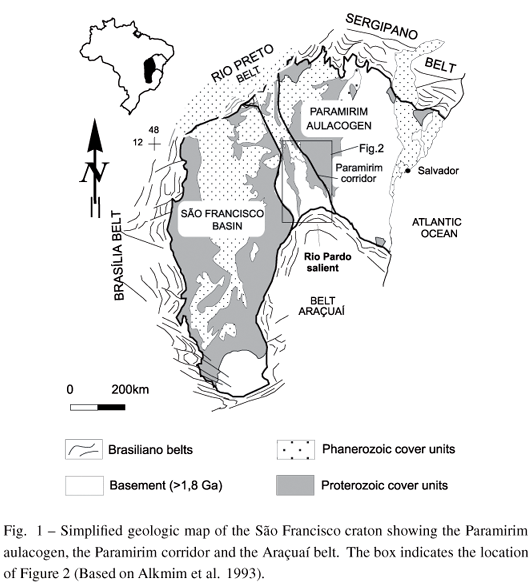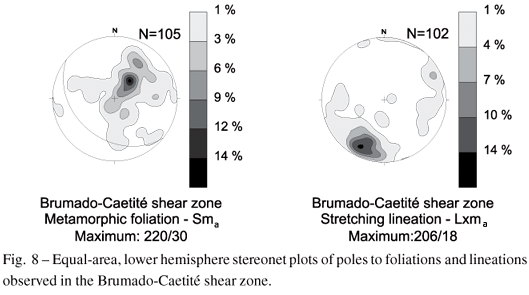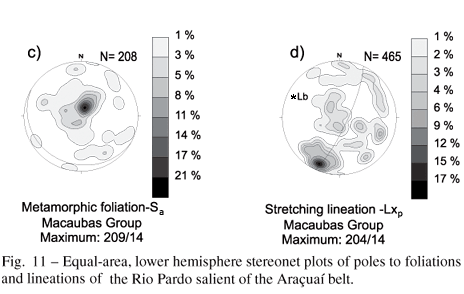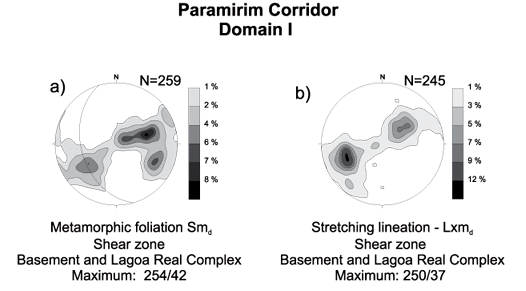The Paramirim aulacogen, hosted in the northern part of the São Francisco craton, corresponds to two superimposed and partially inverted rifts of Paleo and Neoproterozoic ages. The Rio Pardo salient of the Araçuaí belt defines the local limit of the craton and interferes with the aulacogen structures. In order to understand the mechanism and timing of the tectonic interaction between these tectonic features during the inversion processes, a structural analysis was undertaken in the southern Paramirim aulacogen and along the Rio Pardo salient. The results obtained indicate that the Rio Pardo salient formed during an early stage of closure of the Neoproterozoic Macaúbas rift system and consequent initiation of the Araçuaí orogen. The orogenic front propagated further northwards into the craton, causing a first stage of inversion in the southern terminus of the aulacogen trough. Subsequently, the Paramirim aulacogen experienced the main stage of inversion, which led to the development of a NNW-oriented basement involved fold-thrust system. These fabric elements overprint the Rio Pardo salient, and the structures of both the first and second stages of inversion affect the Salitre Formation, the youngestNeoproterozoic unit of the area, clearly indicating a Late Neoproterozoic maximum age for all the inversion stages of the Paramirim aulacogen.
Araçuaí-West Congo orogen; Araçuaí belt; Paramirim aulacogen; Brasiliano event












